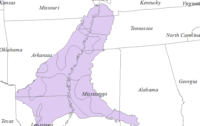High Court’s Groundwater Toxics Permit Rule Is New Conundrum

South Carolina gasoline pipe spill in 2014 was remediated, but pollutants have migrated to water bodies.
PHOTO: SOUTH CAROLINA DEPT. OF HEALTH AND ENVIRONMENTAL CONTROL
The U.S. Supreme Court remanded two legal disputes over groundwater pollutants back to federal appeals courts for reconsideration based on its landmark April 23 decision that set a “functional equivalent” test for whether a discharge permit is needed under federal law when that pollution reaches U.S. protected waters indirectly.
But with many permitting details not well understood, sources say jurists, industry dischargers and regulators are unsure how to insure compliance with drastically reset U.S. Clean Water Act rules that will now apply to groundwater-carried pollution from wastewater plants, pipeline spills and leaking coal-ash poinds, among other sources.
“The high court recognized there is not a bright line or clear test, and lower courts may have to consider other factors,” an energy trade group attorney, who declined to be identified, told ENR. “It suggests there will be additional litigation to try to figure it out.”
The high court’s decision to remand a case involving an accidental 2014 gasoline spill of about 370,000 gallons from a Kinder Morgan oil pipeline will be closely watched.
Pollutants reached a South Carolina creek immediately, but also traveled through groundwater to tributaries of the Savannah River years after the breach was repaired. The Richmond appeals court must reconsider its ruling against the oil company in light of the new Supreme Court standard and determine if Kinder Morgan faces penalties and more cleanup.
The second remanded case, which triggered the ruling written by Justice Stephen Breyer, involves partially treated wastewater in Hawaii that migrated through groundwater to the Pacific Ocean and is believed to have harmed coral.
The Richmond court’s “application of the relatively undefined ‘functional equivalent’ standard will create important precedent in how it will be interpreted and applied to pipelines specifically,” said attorneys from law firm Troutman Sanders LLP in a May 8 analysis.
This could affect how pipeline operators “manage impacts from or related to pipeline construction projects, ongoing maintenance and releases.” The standard also is likely to affect power plant coal ash containments.
The ultimate question is when a discharge permit is needed to avoid clean water law violations, say industry observers. The high court acknowledged that it did not make a clear up or down decision. The U.S. Environmental Protection Agency put on hold its guidance on the issue, pending the decision, but now is set to “help give greater clarity,” the energy group attorney said.
Maui County, Hawaii, pumps about 4 million gallons of partially treated wastewater into the ground each day through injection wells. The U.S. government had argued last year that pollutants released to groundwater are excluded from permitting. But Breyer said that interpretation would open a loophole allowing easy evasion of the clean water law’s purpose.
The U.S. appellate court in San Francisco had earlier ruled that a permit is needed when pollutants are “fairly traceable” from the point source to protected waters. But Breyer also said that test was too broad, ruling that a permit isneeded only when there is a “functional equivalent” of a direct discharge.
Now the appeals court must revisit the case using the new test.
The National Association of Clean Water Agencies says what will be key in permitting decisions are pollutants’ transit time and distance traveled before reaching a protected water body, with other factors including the material through which traveled, extent of dilution in transit and amount of pollution entering the water relative to the amount leaving the point source.
NACWA would not comment on implications of the new test on wastewater plant operations.
Kinder Morgan said in a statement that it has committed to a “thorough and complete” remediation of the spill site, so far spending nearly $12 million. Frank Holleman, attorney for the environmental group plaintiffs, told ENR that they want interception wells installed to stop contaminant plumes. “There are still hundreds of gallons of raw gasoline making their way to the stream,” he said.
The Supreme Court’s Maui County decision has tremendous broad implications, said Holleman. The decision also dismissed the argument made by some that as long as the point source is any distance from protected waters, the Clean Water Act does not apply, he said.





